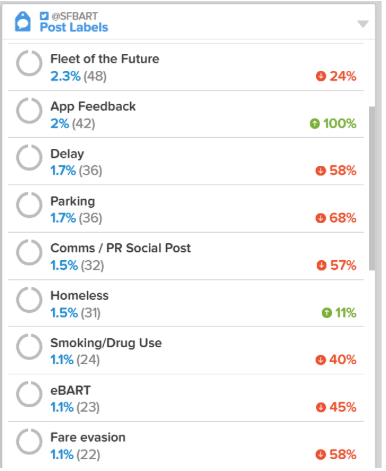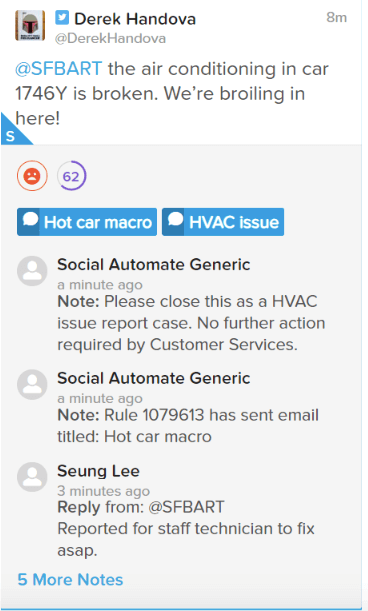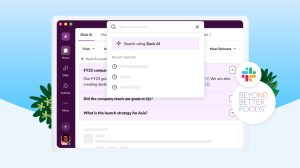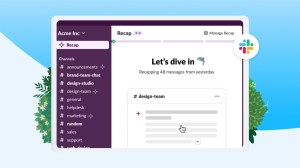Salesforce has always had a special connection to Bay Area Rapid Transit, the rail system that connects San Francisco to four surrounding counties and is popularly known as BART. Salesforce CEO Marc Benioff’s grandfather, Marvin Lewis, was a key proponent of the public transportation system as a city supervisor in the 1940s and 1950s (a plaque at one station honors him as a “determined prophet”).
Today, Salesforce is being used in a strategy that is modernizing the nearly half-century-old system in order to improve service and prepare for the future. We talked to Alicia Trost, BART’s Director of Communications, and Angie West, Director of Technology, about how the BART team is using the platform to connect with customers and drive change.
What drew you to working for BART?
Alicia: I grew up watching BART trains pass by from the window of my grandmother’s house and taking the train to Oakland’s Fairyland with my mom. I have an appreciation of what the system does for the region, and I love being able to share that with the public. There aren’t many places you can experience such diversity, where you can spend time with people of all ages, backgrounds and income levels. I started my career in media, and I’ve always been drawn to serving people and telling their stories.
Angie: I came to BART from the private sector five years ago. With my next job move, I knew I wanted a position that allowed me to impact the community around me. When I joined, the system was just starting to implement newer technologies, and I’ve enjoyed being able to repaint the landscape in that space. It is very important to ensure BART’s technology stays current, as BART is the artery for transit within the Bay Area.
What role does BART play in the Bay Area?
Alicia: We’re a major economic engine because we carry people to their workplaces. We also play a big role in reducing greenhouse gases — our trains are 100% electric, and each one can carry about 1,000+ people. We’re now working toward having clean and renewable energy sources powering the entire system.
BART opened in 1972, and since then annual ridership has grown from about 5 million people to 126 million people. How has the system adapted over time?
Alicia: It has been a struggle to keep up a system that’s almost 50 years old in a region that’s grown so much, while jobs are mostly still in the same place. BART also has not received the same level of subsidy as other transit systems around the world. During peak commutes, 90% of our trains are running, and 10% are getting worked on. We’ve focused on making sure the infrastructure is safe and in good repair. After that, we can turn to modernizing it and delivering a world class service. We’re also promoting smart land use policies to build job centers in places like Oakland and Walnut Creek, so there are reverse commutes.
What do your jobs at BART entail?
Angie: As director of technology, my main focus is updating our customer-facing applications and refining business processes. I’m responsible for pulling governance together and coordinating where we’re going from a technological perspective. I’m also working with other transit systems in the region to see how we can better knit together to provide a more frictionless ride to our customers. I’m proud of what we’ve worked on with Alicia’s team and other internal BART business partners around mobility as a service, and that will be my focus for the next three to five years. It’s about bringing a unified platform together that gives our customers a seamless experience when they’re traveling or trying to get information.
Alicia: I oversee media relations, public information, social media, our website and some branding and signage. I also serve on the core team implementing mobility as a service to make sure we think about riders and the user experience when developing applications. Mobility as a service is an on-demand, real-time and customer-centric model of getting people where they need to go. It includes everything from personalized trip planning using multiple transportation modes to payments for each service.
What led you to start working with Salesforce?
Angie: We were moving from a legacy system and wanted to bring in a cloud-based platform that would help us go into the future. We started by replacing our call center system with Service Cloud and built out from there to Marketing Cloud with Social Studio. We knew Salesforce was a platform that could sustain us and allow us to continually grow without having to build new modules. It has the knowledge base and focus on customer management that will help us stay ahead of the curve. It’s an integrated platform that’s the best from an industry standpoint.
Alicia: I came to Angie’s team saying that I needed a tool to give me data on the conversations happening on social media. Marketing Cloud fit what we were asking for. Now, I can see the volume that each team member is contributing to social media with Social Studio, and which topics are trending. I can set up alerts and use amazing search functions to drill down into the data. I can also create workflows that communicate with our CRM, and the system we use to request maintenance–all with the push of a button. We will soon use Salesforce Email Studio to implement email marketing campaigns, and are turning to Service Cloud to create a self-help center that can answer routine questions better than our clunky FAQs.
What impact has your decision to move to the cloud had on BART?
Angie: It’s been transformative. Before, customer service was relying on older technology and spreadsheets, and we weren’t capturing a lot of the information we have now centrally or through an integrated platform. Today, it’s all in the cloud, and we can access it the way we need to without putting a lot of infrastructure resources in place.
We also use Salesforce to analyze what’s trending, which helps us understand the customer journey and provides information on how to engage with each persona, rather than us spending time pulling data together from spreadsheets and disparate systems. Salesforce is flexible and customizable, so we can focus our resources on delivering service.
Alicia: Social Studio is giving us the ability to listen to our riders and use that data to make meaningful changes. When you work for an agency that’s operations-heavy, it’s difficult to make changes because what’s best for running trains rules the day. Social Studio brought me the data I needed to show a change was required, whether that’s a policy or new feature. You can’t put a price tag on having interactions with your customers in real time on the topics they care most about, giving them an authentic answer and making them feel their voices are heard. Pursuing a cloud strategy, helped us be more impactful and efficient. Our social media team consists of two people, that are not even full time, but we’re able to be so effective now. In the long term, we want to build a relationship customized to individual riders, such as notifying them about disruptions on their line instead of peppering them with every delay notice systemwide, if they choose to opt in to those notifications.

What’s an example of changes you’ve made thanks to tapping into customer conversations?
Alicia: We recently adjusted platform signs to show whether the coming train was an old or new model, and there were some glitches in the first few days. I created a tag for posts about this using keywords and could send the team specific time and location stamped examples of what was wrong at the end of the day. They fixed the issue in 24 hours. Before, it took much longer to realize there was a problem. I also got back to the riders so they knew we listened. It builds so much trust and transparency, and hopefully makes riders feel better about our brand and service.

Societal challenges like homelessness and mental illness can spill over into systems like BART, affecting its reputation in the eyes of some riders. How is BART addressing this?
Alicia: One way is having a really honest communication strategy that listens to people’s concerns, but also corrects inaccuracies and educates them about policy and state law. It’s rewarding for riders to be told exactly why something is happening. BART has funded homeless outreach teams to help connect those who seek shelter in our system to services. We need a regional approach to homelessness, because kicking someone out of the system doesn’t solve the problem if they don’t have somewhere they can go — they are just going to come right back. We are also working to make our system safer and cleaner. We’re bringing on an entire fleet of new train cars, and some stations have gotten modernization grants. We’re hiring more police officers, and our board just agreed to a new style of fare gates that will make it harder for people to evade fares. The Salesforce platform plays a role in safety and a better customer experience: We can’t have eyes and ears everywhere, so we rely on people to tell us when something is wrong.
Why is being data-driven important for an agency like BART?
Alicia: Data leads to change. In a system as large as BART and in government, where things move so slowly, you need the data to show why change is needed. Also, we have limited resources and limited staff, and we’re taxpayer-funded. When you make decisions based on data, you know you’re making the best choice for the greater good because you can prove it.
Angie: BART is making a huge shift in capturing and curating passenger data. We now have a wealth of information on ridership, travel patterns and trains that gives us a holistic picture of what’s changing and what needs to change. We can get ahead of the curve, instead of being behind it.
How is BART preparing for the future of the system?
Alicia: We’re about to bring in a new train control system and power upgrades that will allow us to run trains more frequently. We often hear from riders that they want service that’s as frequently as possible, reliable and on time.
Angie: From a technology perspective, we’ve put in place an architecture that prepares BART for the next five years. Thanks to our strategy to move to Salesforce, as well as the leadership of our Chief Information Officer Ravi Misra, we have a plug-and-play platform that allows us to adopt new technologies quickly and integrate them seamlessly.
For more about the BART story, check out this video.



















